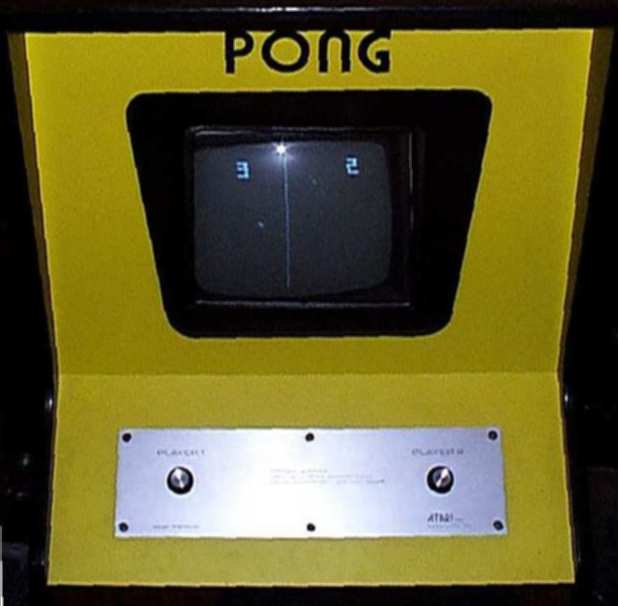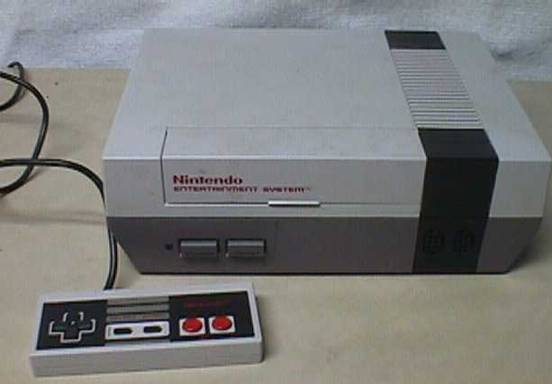Video games made an entrance in the 70s. The very first arcade-type of video game was introduced in 1971 by Nutting Associates, and the game was called Computer Space. In 1972, Pong was introduced to the people by Atari, the first video game that was truly successful. It was fairly simple to play – all you had to do was move a cursor and make the slides bounce back on a moving square. As you advanced, the game increased in speed, thus making the game more difficult to complete.

Video games in 1970-1980
That same year Magnavox came up with the first home video gaming system called Odyssey. It didn’t have a microprocessor and the central part of the whole system was a panel packed with diodes and transistors. It was a game with a lot of limitations, and the graphics it was able to produce were very simple. The Odyssey required custom plastic overlays to be taped over the screen of a TV. In 1975, Pong had an upgrade. Atari started selling the home version of the video game exclusively via Sears, and it even had the Sears logo. Pong had an amazing success, and it’s safe to say that it launched a niche we now regard as one of the most competitive in the world.
The first truly removable gaming system was Fairchild Channel F, which was released in 1976 by Atari once again. It instantly became a commercial success; it used removable cartridges which allowed a lot of games to be played with the same hardware. At the time, the VCS (Atari Video Computer System), was incredibly sophisticated. It had a 6502 MOS microprocessor, a customized graphics chips (Stella), and 128 bytes RAM. For a couple of years, Atari dominated the niche with several other devices, such as the VCS 5200, Mattell’s IntelliVission, and ColecoVision.

Video games in the 80s
In 1985, Nintendo changed everything when they launched NES, the Nintendo Entertainment System. The system introduced several fundamental concepts in the gaming industry: it replaced the joystick with a pad controller, crafted genuine replicas of arcade video games, and increased the cost of the hardware in order to make a decent profit out of the business.
Nintendo’s marketing plan paid off, and NES kept gaining recognition on the video game marketplace. Thanks to Nintendo, home video game systems became respected and they were no longer considered cheap replicas of arcade machines. The company kept developing and introducing new gaming consoles.
Video games in the 90s
Many innovations in the video gaming niche were implemented in the 90s. The games quickly changed from sprite-based graphics to 3D, thus leading to the creation of several video game genres including: real-time strategy, first-person shooter, MMO, and survival horror.
From 1987 until 1996, video game consoles experienced a 4th generation of consoles. Most of the games and their corresponding systems were 16-bit. 2D graphics went through visible improvements, and experimentation with 3D had already started. As for the system launched during this time, we should mention: Super Nintendo Entertainment System, Neo Geo, Sega Mega Drive/Genesis, and Game Boy.
As for the actual games, console fans were extremely fond of the fighting genre. Even though Street Fighter was launched in 1991, and it was a success, it was Sega’s Virtua Fighter that stole the show. It contained the first 3D graphic effects in a video game, so fans immediately fell for it. As for first-person shooting games, some of the most acclaimed of the 90s were Doom, Goldeneye 007, and Quake. On gaming platforms, nothing could beat Super Mario World, released in 1990.
We live in a completely different time now. We have smart devices and we like to use our fingers to play our favorite games. Most games are 3D, and gaming consoles are now more revolutionary than ever. Can you imagine playing Dirt Bike Games 365 on a Sega or old-fashioned Nintendo? That would be interesting to say the least.


